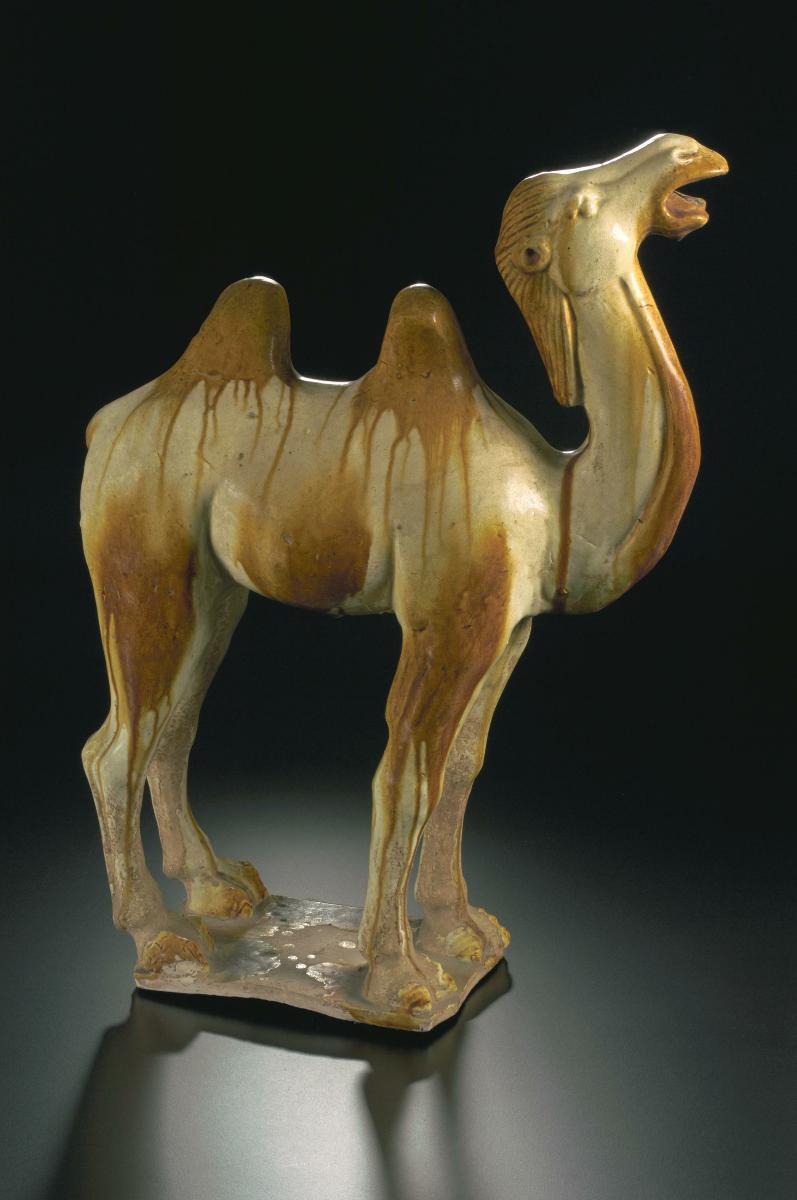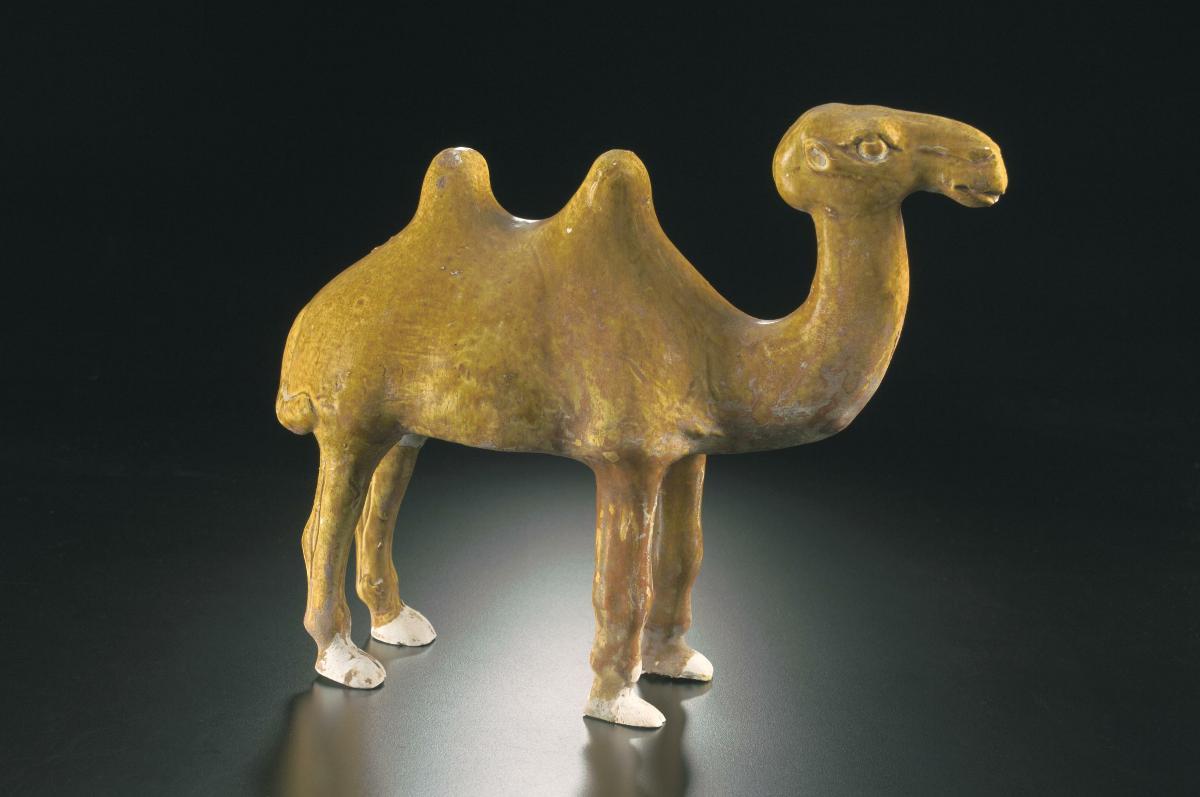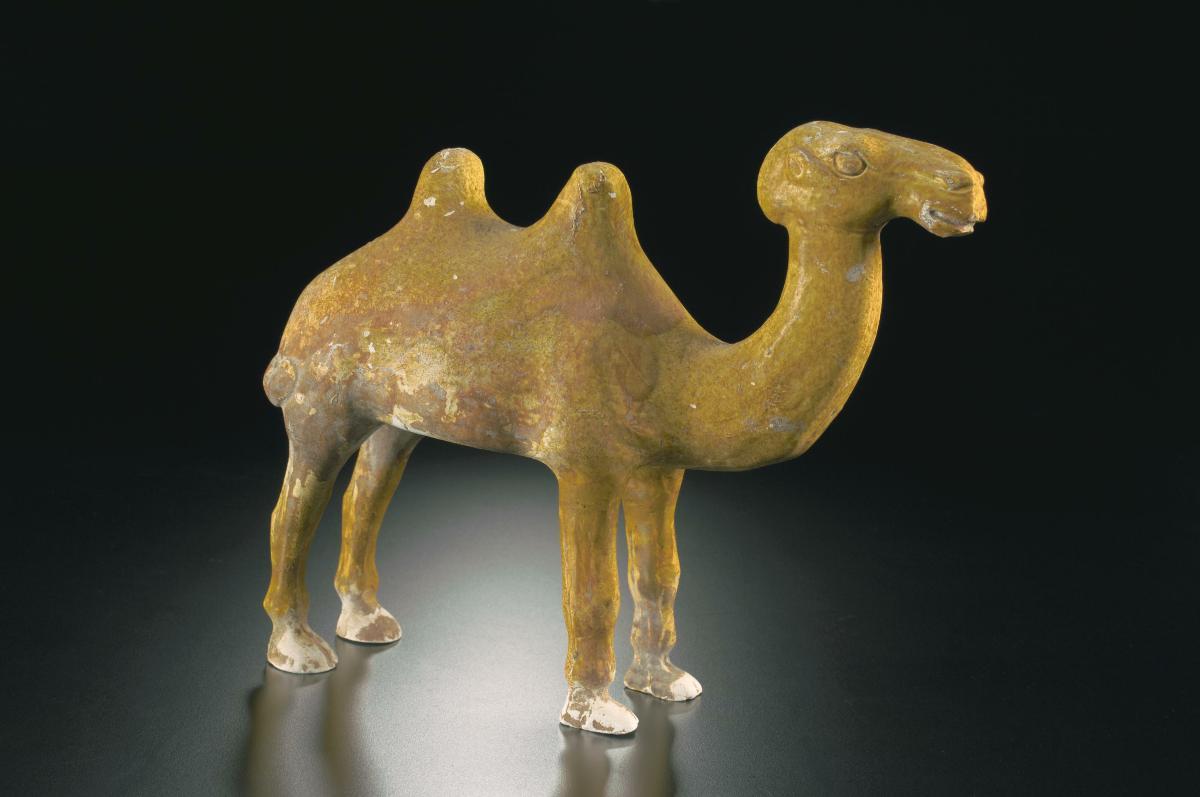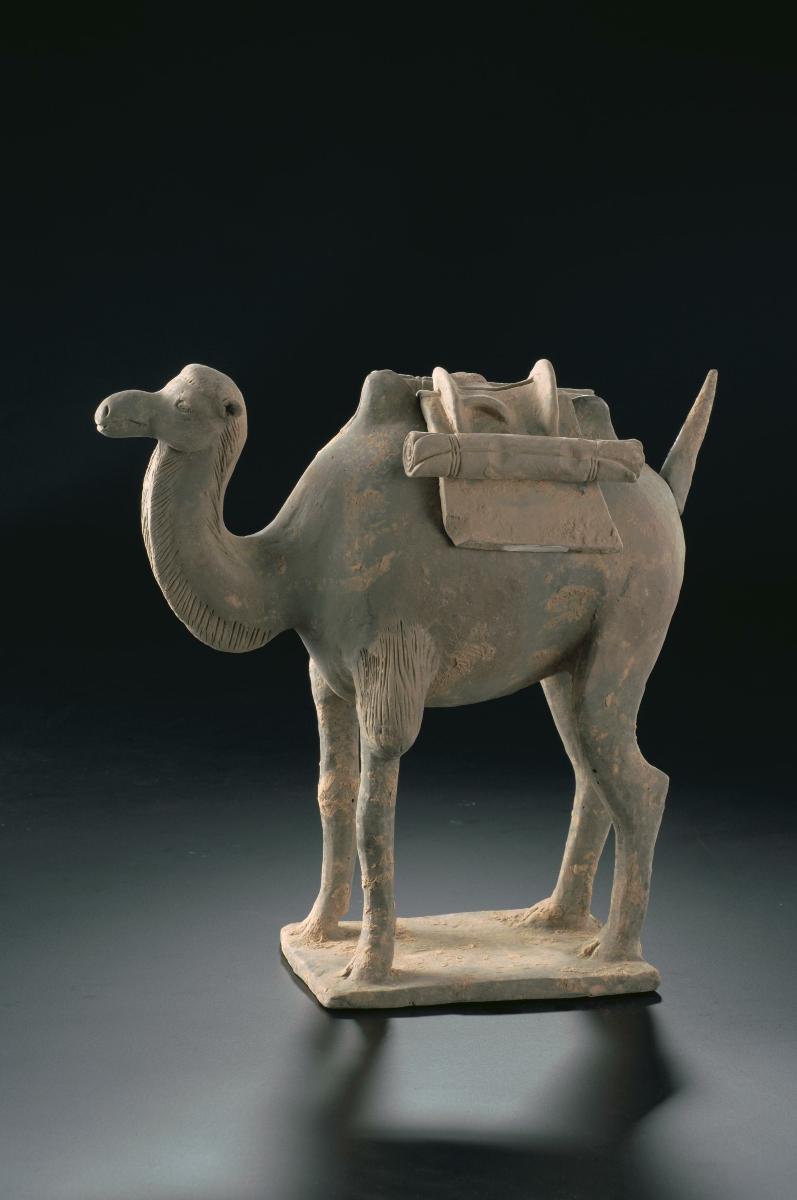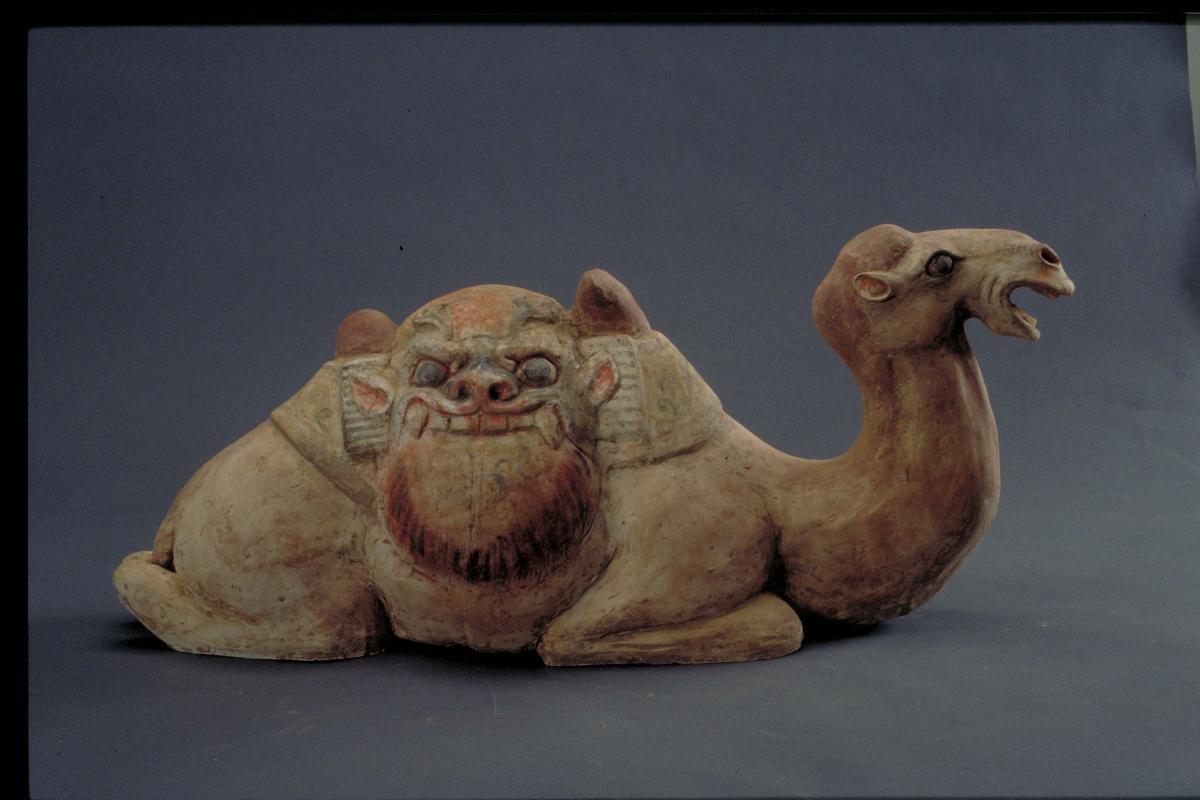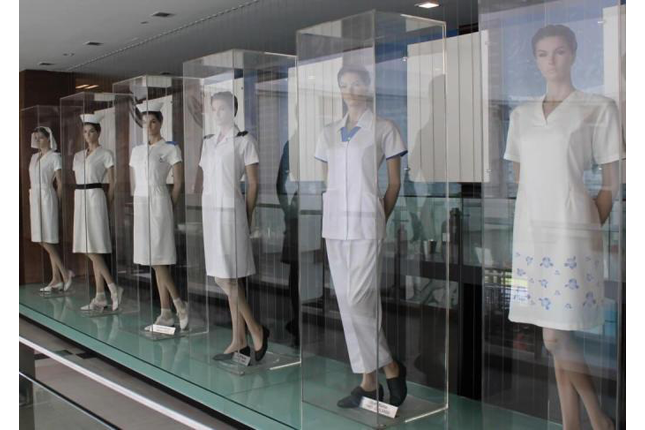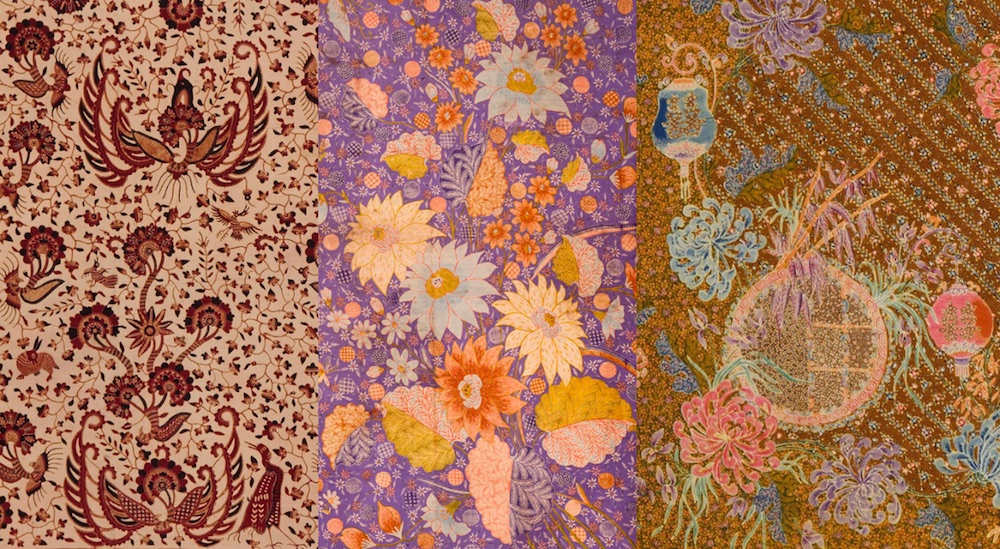This amber-glazed camel was a funerary item found in the tombs of ruling elite to provide for their afterlife. The two-humped Bactrian camel was a symbol of commerce that took place along the Silk Road. Trading on the Silk Road was often a difficult journey through mountains and deserts of Central Asia. It could often only be navigated by the camel, an animal able to withstand the burning heat and freezing cold of the desert. Chinese artists began to make models of this creature for use as 'mingqi' or burial wares during the Tang dynasty (618-906). This practice continued into the Ming dynasty as burial wares were still considered important for the afterlife.The practice of using lead-glazed burial wares had already started during the Han dynasty (206 BCE-220 CE). This glaze technology further developed during the Tang dynasty (618-906) to include the streaky ‘sancai’ (‘three-colour’) glaze such as cream, amber, brown and blue.The custom of making ‘mingqi’ or burial wares was an ancient practice. It was believed that these wares were necessary to the deceased in the next world. They were also a display of wealth and social status.




